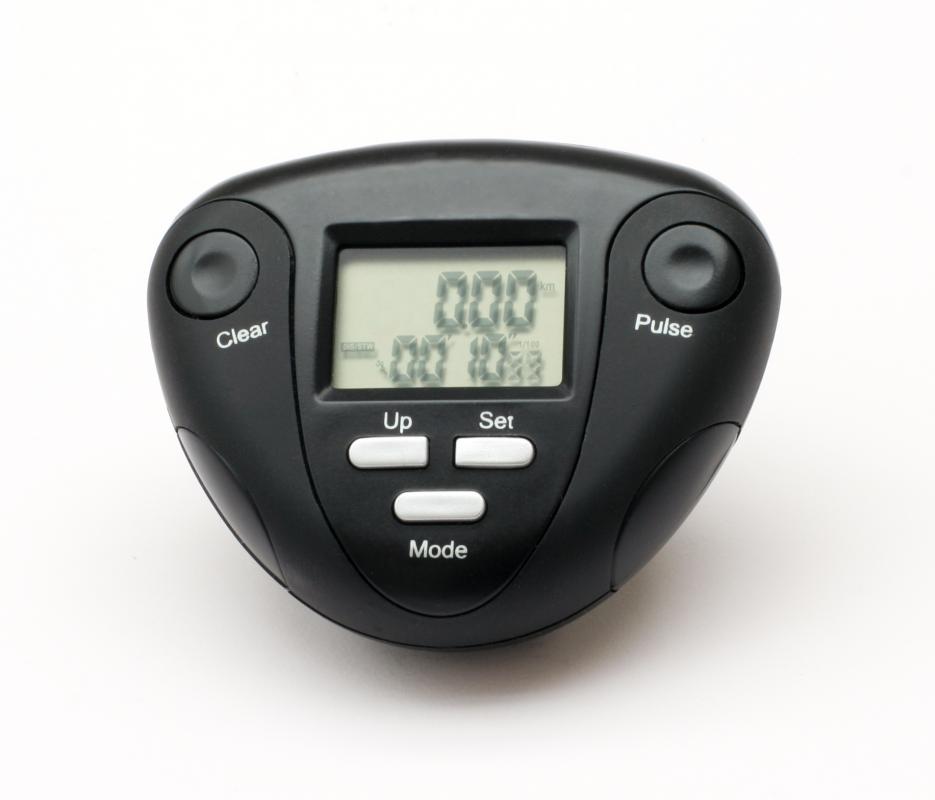At WiseGEEK, we're committed to delivering accurate, trustworthy information. Our expert-authored content is rigorously fact-checked and sourced from credible authorities. Discover how we uphold the highest standards in providing you with reliable knowledge.
How do I Choose the Best Fitness Pedometer?
Choose the best fitness pedometer by considering the level of device accuracy, the degree of comfort, and the price that fits your budget. Other factors to consider include how user-friendly and intuitive the fitness pedometer is, as well as whether it has extra features that can enhance your quest for wellness. Extra features might include a screen that counts calories burned while walking or an audio coach that periodically voices statements of encouragement.
The best fitness pedometer is marked by such extreme accuracy that the footsteps recorded by the device mirror the exact number of steps actually taken. Many walkers elect to borrow the pedometers of friends or relatives in order to perform accuracy testing. If that is not feasible, many stores allow pedometers to be exchanged or returned, permitting shoppers to buy a range of different pedometers to see which one is most faithful.

To conduct an accuracy test, many experts recommend that walkers purposefully step in mud, chalk, water or some other substance that can leave a mark on the sidewalk. Then, count the number of steps taken while observing the pedometer to see if the device is adding up the footfalls accurately. A shopper can often choose the best and most accurate fitness pedometer without experimental testing simply by checking to see if the desired pedometer is reliant on an electric meter, springs, or a global positioning system (GPS). GPS-based pedometers are among the most reliable in terms of outside distance walked and speed; they usually do not register the number of steps and cannot achieve a sustained GPS signal for indoor walking. They are also among the most costly pedometers.

Indoor walkers, therefore, typically consider choosing spring- or electric-powered models. An electric fitness pedometer is considered the best for both indoor and outdoor accuracy when it comes to counting distance in terms of footsteps. Fitness pedometers with springs, however, are among the least expensive. Buyers shopping on a small budget can choose between hairspring pedometers and coiled spring pedometers; the latter is considered the more reliable of the two, according to fitness studies.
If buying a pedometer, fitness experts recommend considering the age of the user. Elderly people enjoy walking because it is one of the few exercises that does not stress the joints or require great strength. This demographic, however, might be turned off by a model with lots of features and complicated controls; so, too, might users who are not technology-savvy. Experts recommend, therefore, that user-friendliness be considered, not just due to age, but also due to differences in visual ability to see the display, manual dexterity in working the device, and ability to use technology without getting confused or exasperated. People with no drawbacks can choose complex devices; for those with any of the named concerns, the simplest device might often be the most effective.
When shopping for comfort, a buyer should decide on what part of the body the fitness pedometer will be worn. They can be worn on the waistband near the hip or on the thigh. Before a purchase, many buyers try on the device in those locations to ensure the best fit; a loose-fitting device can migrate, causing annoyance and interfering with measurements.
AS FEATURED ON:
AS FEATURED ON:












Discuss this Article
Post your comments